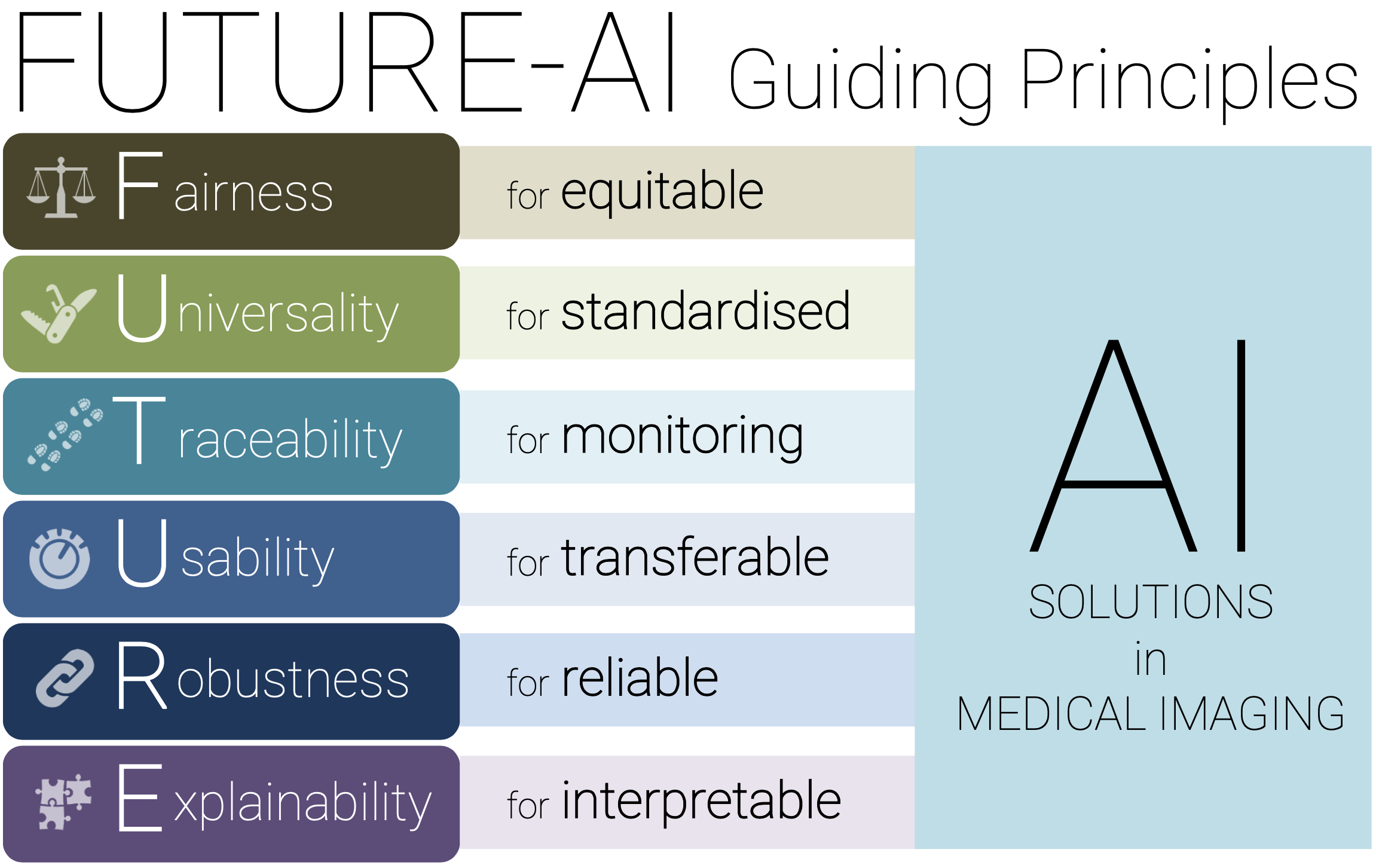The recent advancements in artificial intelligence (AI) combined with the extensive amount of data generated by today's clinical systems, has led to the development of imaging AI solutions across the whole value chain of medical imaging, including image reconstruction, medical image segmentation, image-based diagnosis and treatment planning. Notwithstanding the successes and future potential of AI in medical imaging, many stakeholders are concerned of the potential risks and ethical implications of imaging AI solutions, which are perceived as complex, opaque, and difficult to comprehend, utilise, and trust in critical clinical applications. Despite these concerns and risks, there are currently no concrete guidelines and best practices for guiding future AI developments in medical imaging towards increased trust, safety and adoption. To bridge this gap, this paper introduces a careful selection of guiding principles drawn from the accumulated experiences, consensus, and best practices from five large European projects on AI in Health Imaging. These guiding principles are named FUTURE-AI and its building blocks consist of (i) Fairness, (ii) Universality, (iii) Traceability, (iv) Usability, (v) Robustness and (vi) Explainability. In a step-by-step approach, these guidelines are further translated into a framework of concrete recommendations for specifying, developing, evaluating, and deploying technically, clinically and ethically trustworthy AI solutions into clinical practice.
翻译:尽管人工智能在医学成像方面的成功和未来潜力,但许多利益攸关方对人工智能成像解决方案的潜在风险和伦理影响感到关切,认为这些解决方案复杂、不透明,难以理解、使用和信任关键临床应用。尽管存在这些关切和风险,但目前没有具体的指导方针和最佳做法指导全医学成像领域未来AI的发展,以增进信任、安全和采纳。为弥合这一差距,本文件审慎地选择了从5个欧洲卫生成像业AI大型项目积累的经验、共识和最佳做法中挑选的指导原则。这些指导原则被称为FUTURE-AI, 其组成部分包括:(一) 公平性,(二) 普遍性,(三) 易懂性,(四) 易用性,(五) 精准性和(六) 解释性。在逐步评估、协商一致和最佳实践中,这些指导原则被进一步转化为一个具体的临床实践。







